Great benefits of water fern
Agricultural scientists around the world and in Vietnam are very hopeful about the future of water fern in organic agricultural production today.
Water fern grows naturally in many ponds, lakes, marshes, and rice fields in Vietnam. More than 30 years ago, farmers in our country did not have many types of chemical fertilizers to use like they do now. Therefore, the Ministry of Agriculture and Rural Development has a policy of raising water fern in ponds, lakes, and rice fields to use as fertilizer for crops and green food for livestock.
In Nghe An , before 1985, the movement of raising water fern in rice fields was strongly developed, becoming a competitive movement in all agricultural cooperatives, mass organizations, especially youth and women.

Later, when the policy of chemicalizing agriculture, the use of chemical fertilizers became popular until today. Over time, the use of chemical fertilizers revealed many adverse consequences, such as: land increasingly degraded, barren, and infertile; creating conditions for pests to thrive, polluting the water, soil, and air environments; especially the risk of creating agricultural products that are unsafe for human health... Therefore, the trend of switching to organic agricultural production to protect land resources, reduce environmental pollution, and create clean products for consumers is inevitable.
To contribute to promoting organic agricultural production, water fern has been encouraged by scientists both in the world and in Vietnam to use as fertilizer for agricultural production today.
Water fern lives on the water surface and has the ability to live in symbiosis with the nitrogen-fixing green algae (cyanobacteria) Anabaena Azollae. The nutrients in water fern calculated by dry matter: Protein 25 - 35%, amino acids 10%, minerals 10 - 15%, rich in omega 3, omega 6, vitamin A, beta carotene, vitamin B12 and calcium (Ca), copper (Cu), iron (Fe), magnesium (Mg), phosphorus (P) and potassium (K).
In particular, water fern is a plant that grows very quickly, can double its biomass in just 2-3 days, if well cared for. Therefore, raising and using water fern as organic fertilizer for agricultural production, pig and chicken farming is very good and very effective.
Currently, in Minh Luong town, Chau Thanh district, Kien Giang province, Mr. Le Quoc Viet cultivates 2.5 hectares of rice without using chemical fertilizers or spending money on pesticides.
Mr. Le Quoc Viet only collects water fern to breed and then releases it into the rice field to reproduce until it covers the entire water surface of the field. When the water fern is old, it will sink and decompose into organic fertilizer, which is a very good source of nutrients for rice growth, with a yield of 65 - 70 tons/ha. After harvesting, the family's rice output is purchased by Le Gia Company to process organic rice and sell to the market.
According to Professor, Dr. Mai Van Bo - former Director of the Vietnam Academy of Agricultural Sciences, the current trend in agricultural production is to use organic fertilizers. For many years now, farmers have been using a lot of chemical fertilizers because they are effective immediately and convenient to use. In addition, the shortage of labor has led to a sharp reduction in the use of organic fertilizers, or even no use at all. Therefore, the soil is degraded both organically and nutritionally. Currently, the State as well as the Ministry of Agriculture and Rural Development are returning to recommending farmers to use organic fertilizers.

3 effective ways to use water fern
The use of Azolla today in some countries in the world and our country has 3 directions. First, like in some countries, especially in India, they raise Azolla technologically in built tanks or earthen tanks lined with geotextile. All Azolla products are scooped out, dried and used as feed for poultry, aquaculture, and pig farming very well, because this green food source is rich in Protein. Second, as input material for the pharmaceutical industry to extract Phylamin products. Third, as high quality organic fertilizer.
Using water fern as fertilizer nowadays can be done by: raising water fern in rice fields as farmers have done in the past. When the water fern covers the field, collect the water fern, bury it in the ground around the rice roots so that the water fern can rot and become fertilizer for the rice plants. If there is not enough manpower to bury the water fern, when the water fern is old, it will die and sink into the field, which is also good fertilizer.
The second method is to cultivate and intensively cultivate duckweed in ponds, swamps, ditches, etc. so that the duckweed can reproduce quickly. Every 2-3 days, scoop it up and compost it into fertilizer for all types of crops. Using duckweed as fertilizer is a measure and a direction for developing clean agriculture, because it is a very good source of biological green manure for crops, improving the soil, cleaning the environment, and producing clean products.
The most worrying and feared issue when raising water fern is leaf-eating worms. Experience from the past of farmers in Yen Thanh, Dien Chau, Quynh Luu districts... which are localities with the movement of raising water fern in rice fields to use as fertilizer for the spring rice crop, shows that: When the water fern starts to be infested with worms and before releasing the water fern into the rice fields, it must go through the fermentation process. The method of fern fermentation is very simple, people gather all the water fern in a corner of the field, pile it up, then cover it with mud, about 1 day later all the worms that harm the water fern die due to lack of air to breathe and then release the water fern back into the fields. By doing this, there is no need to use pesticides to spray.
Caring for and nurturing duckweed to grow quickly is not too difficult. Raising duckweed only requires phosphate fertilizer and wood ash sprinkled on the surface of the duckweed, about once every 8-10 days. If done so, the duckweed roots will grow quickly, the leaves on the duckweed wings will be green, and the ability to synthesize nitrogen in the air (Nitrogen - N2) will be stronger. Such duckweed will be a source of fertilizer that provides both organic green matter and a large source of nitrogen because the duckweed synthesizes it, making it a very good fertilizer for rice plants.
Source










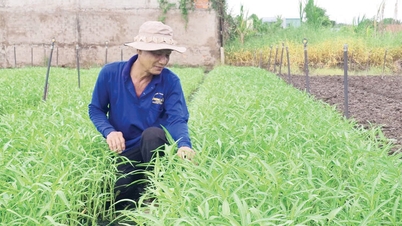





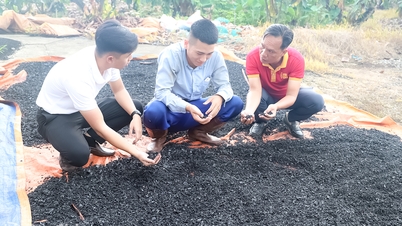

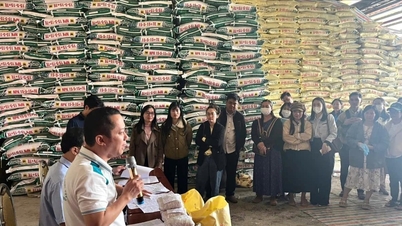





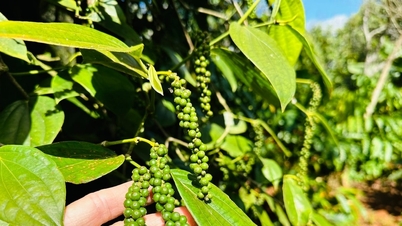






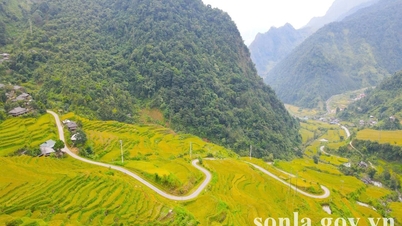




![[Photo] Parade to celebrate the 50th anniversary of Laos' National Day](/_next/image?url=https%3A%2F%2Fvphoto.vietnam.vn%2Fthumb%2F1200x675%2Fvietnam%2Fresource%2FIMAGE%2F2025%2F12%2F02%2F1764691918289_ndo_br_0-jpg.webp&w=3840&q=75)




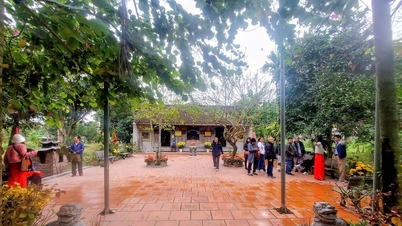

















































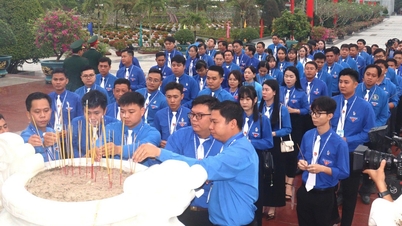




















Comment (0)